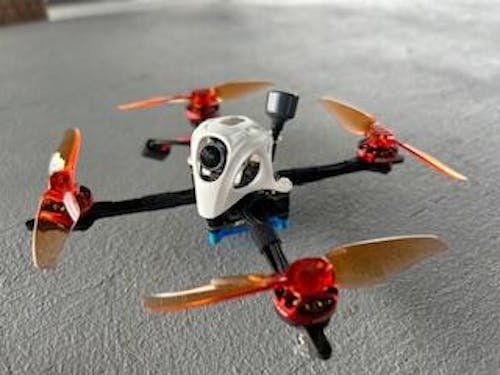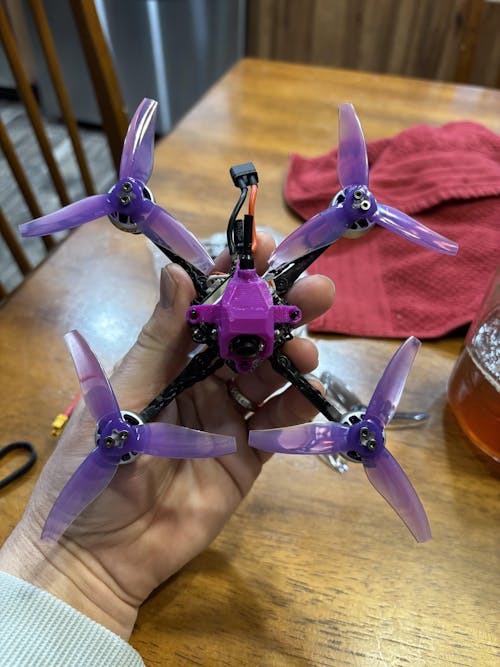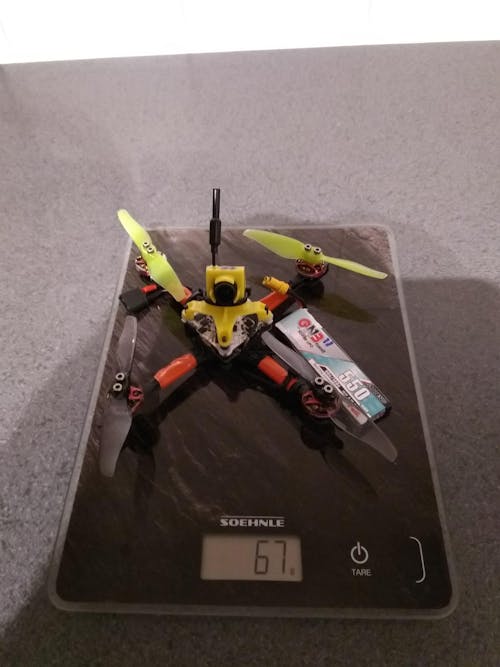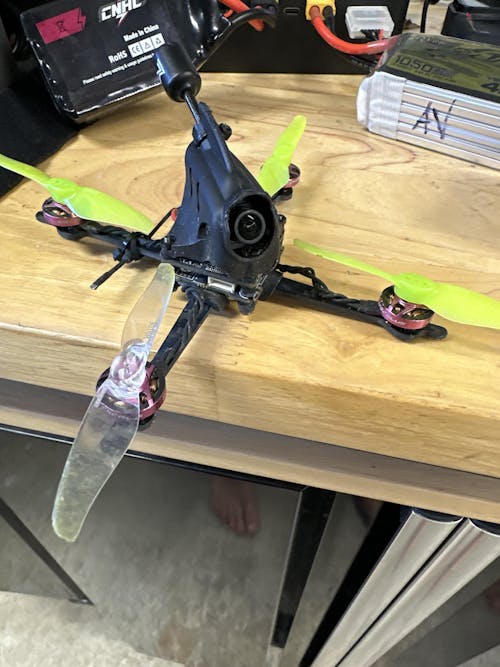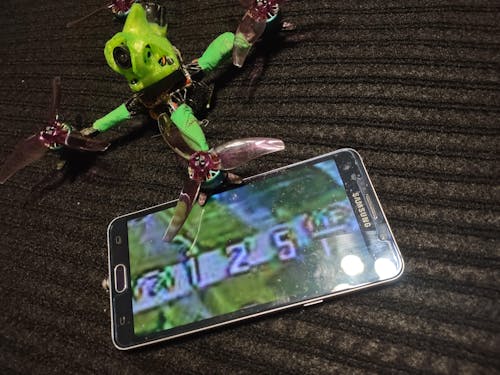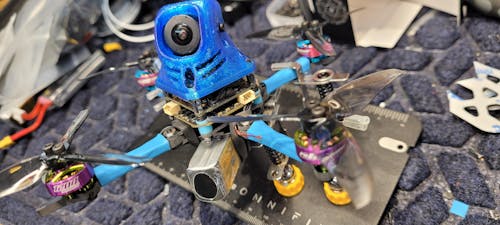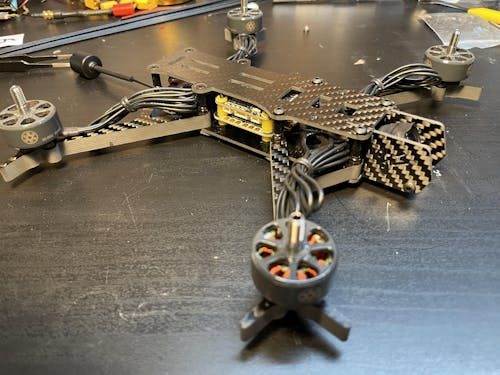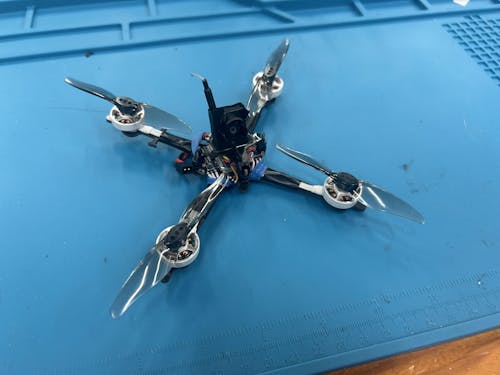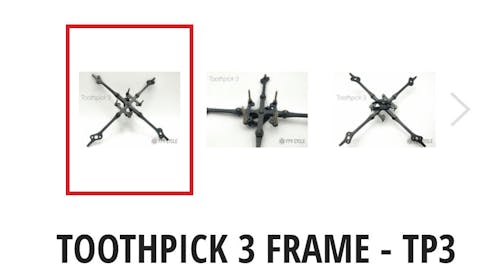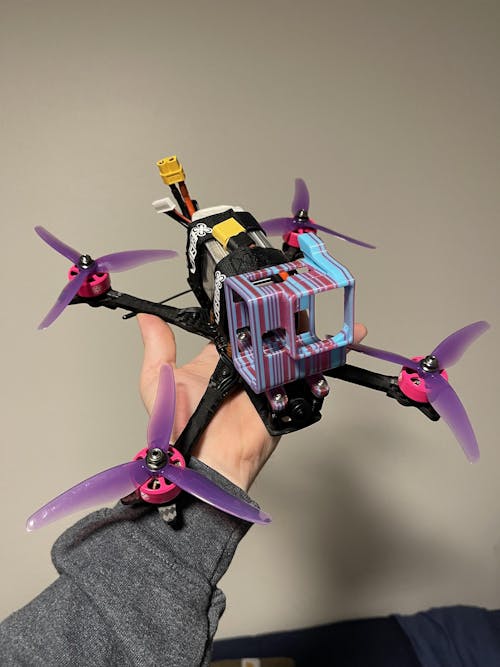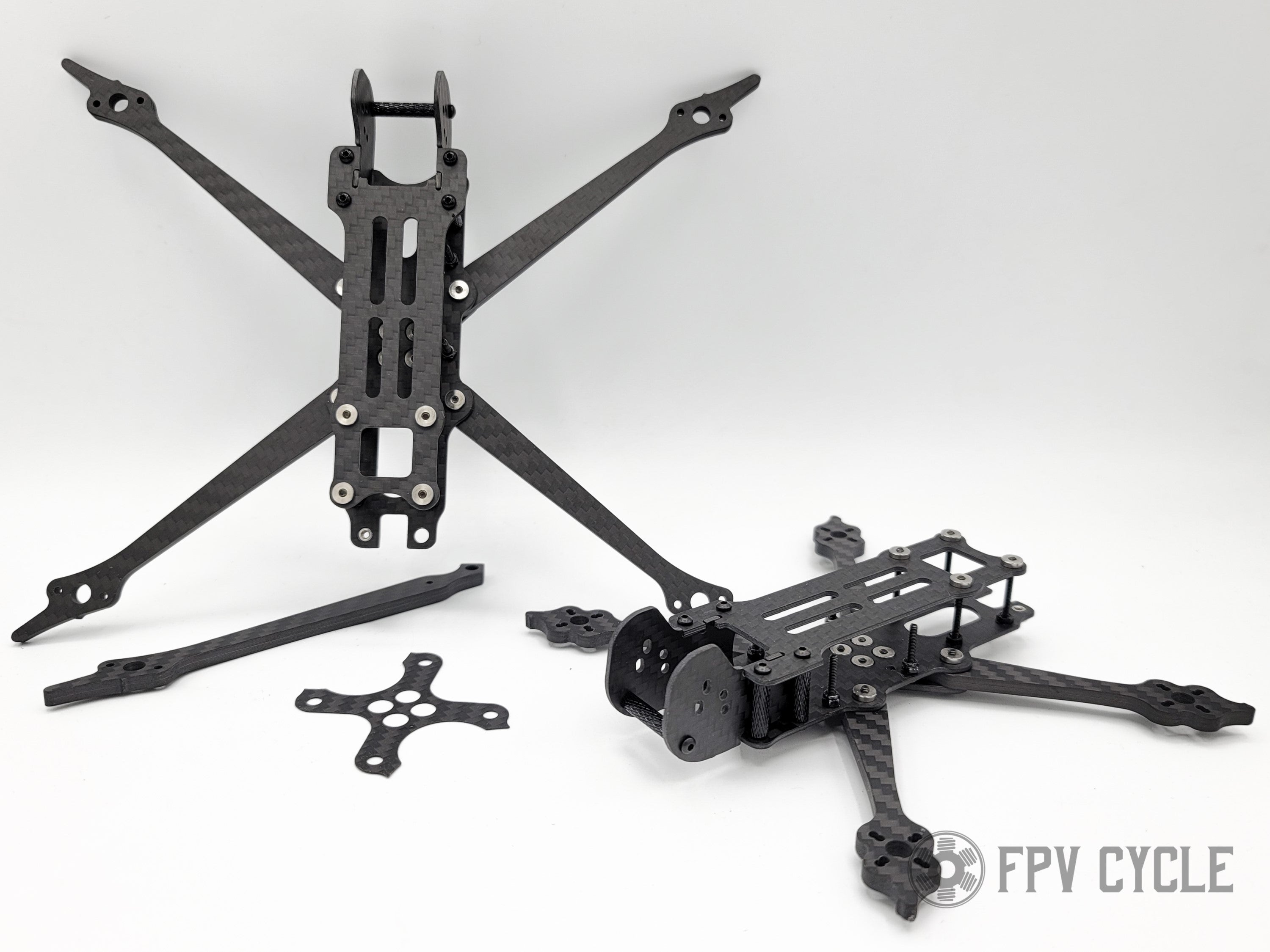
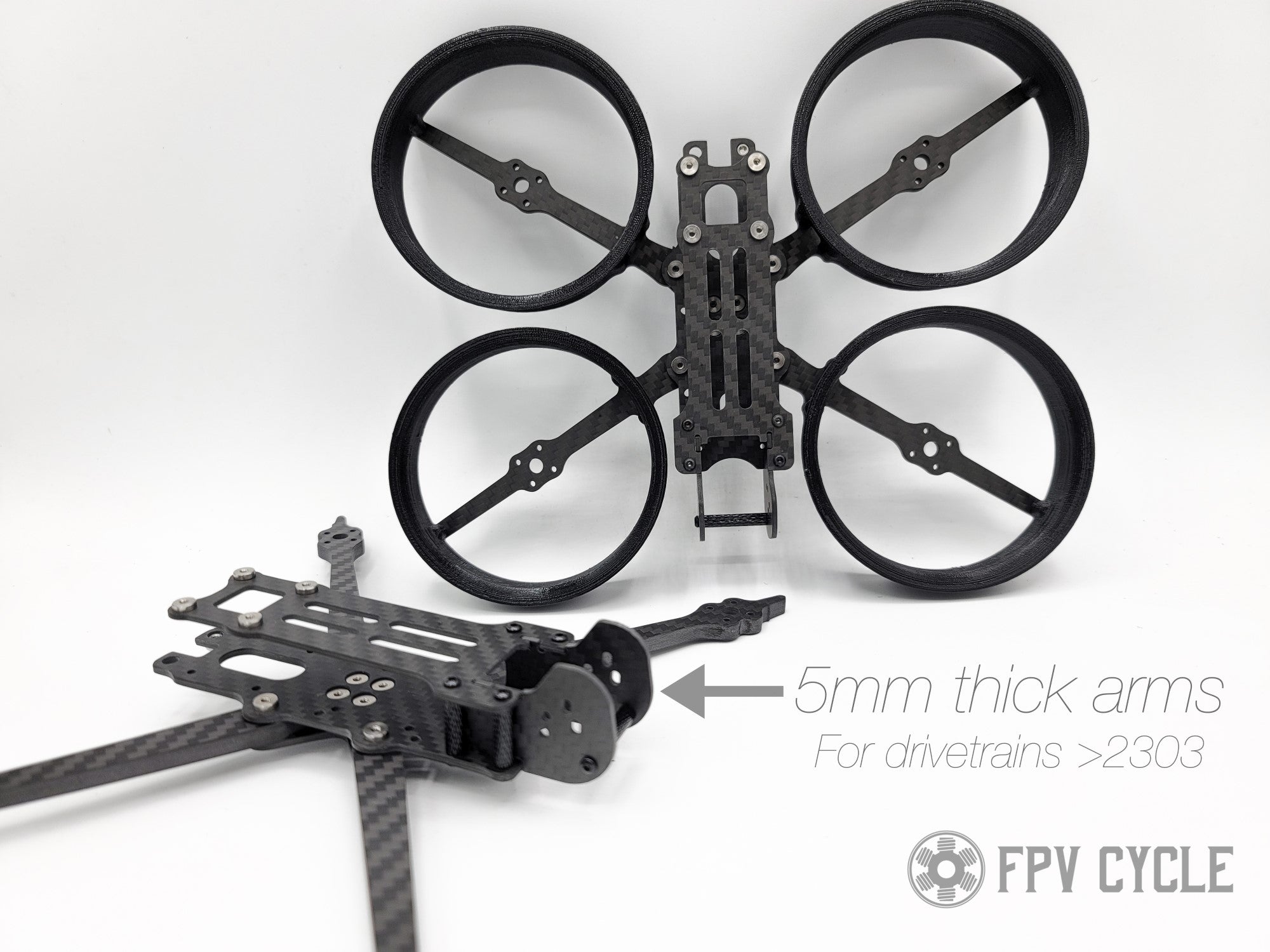
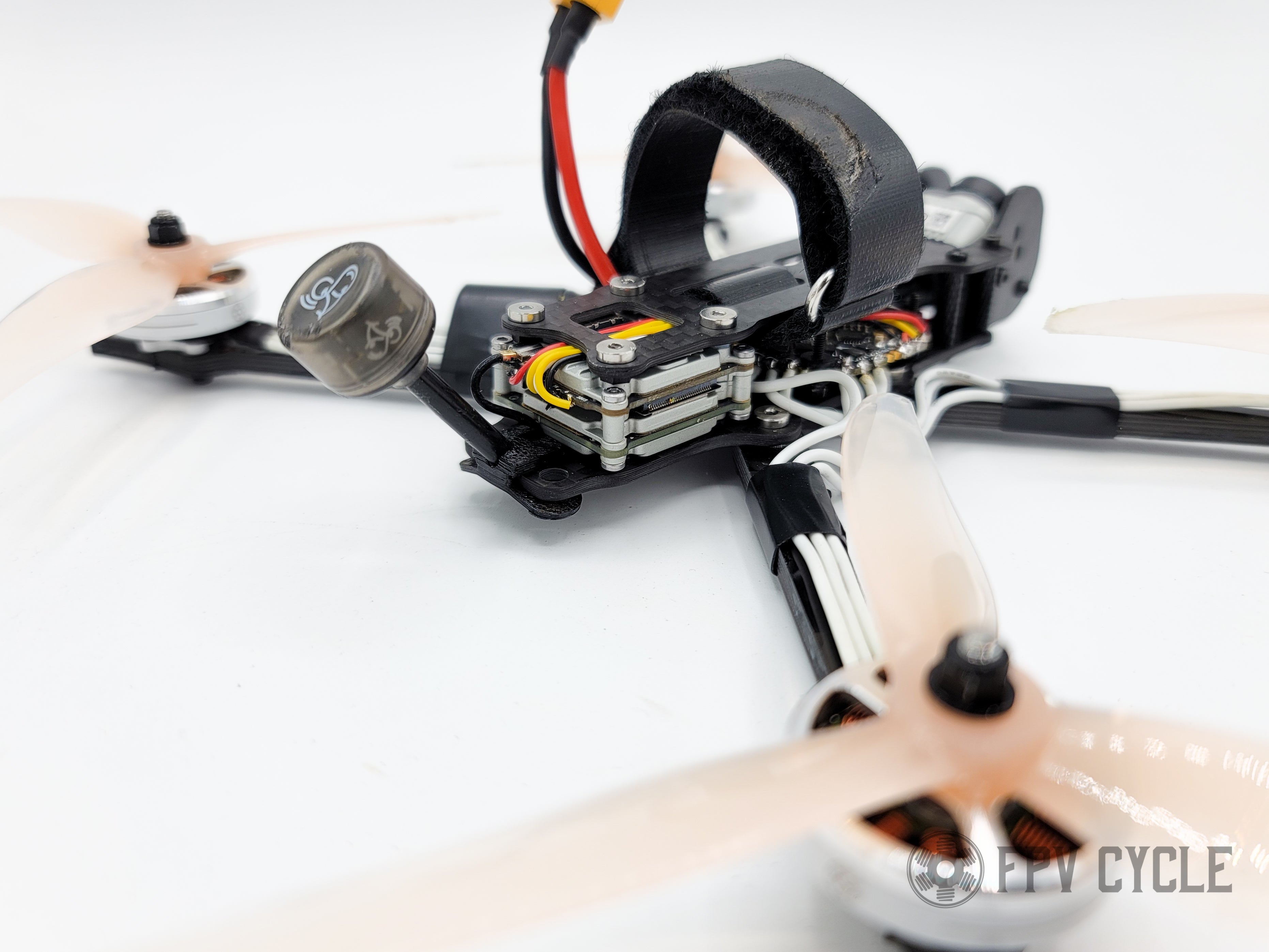
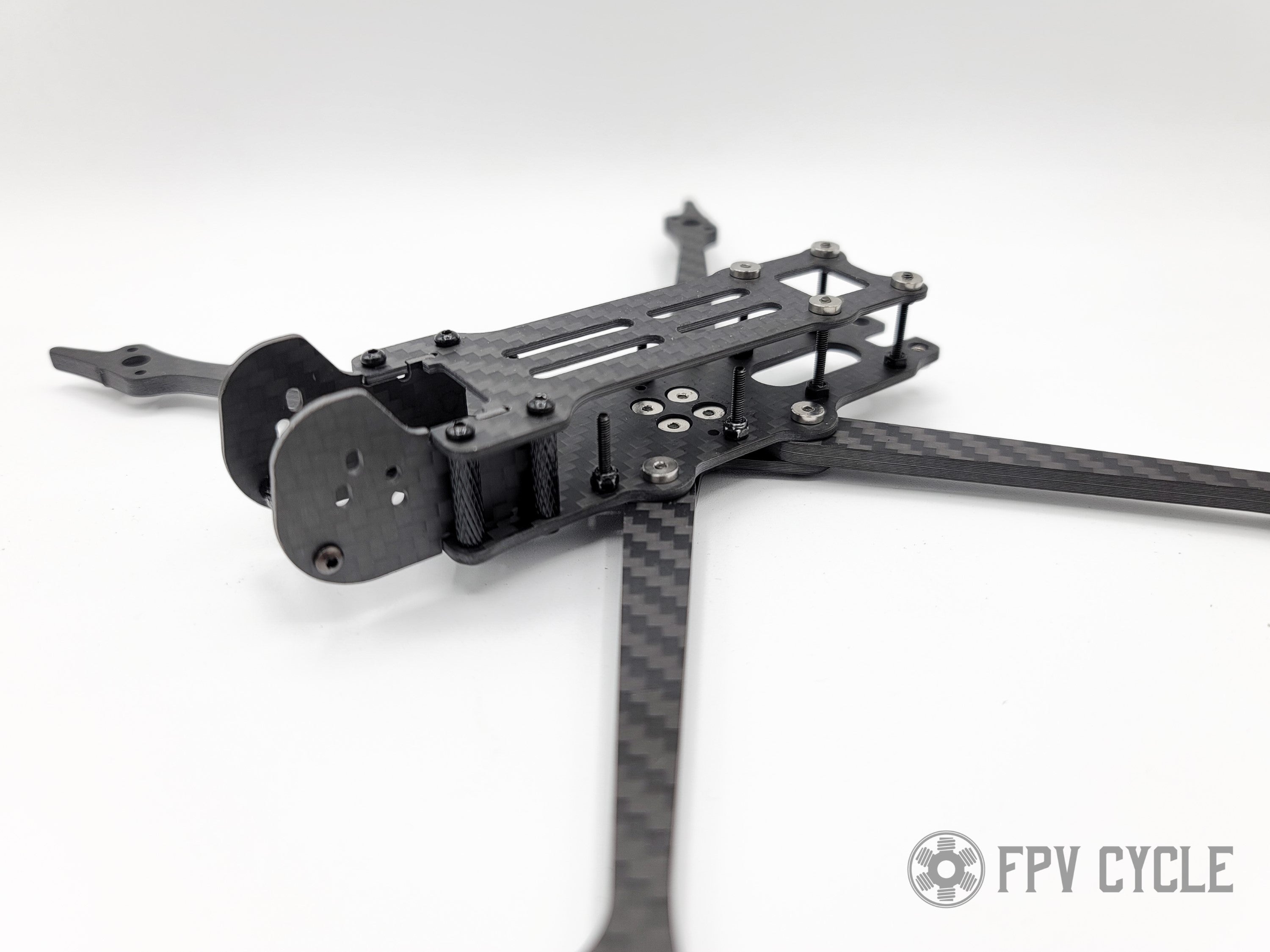
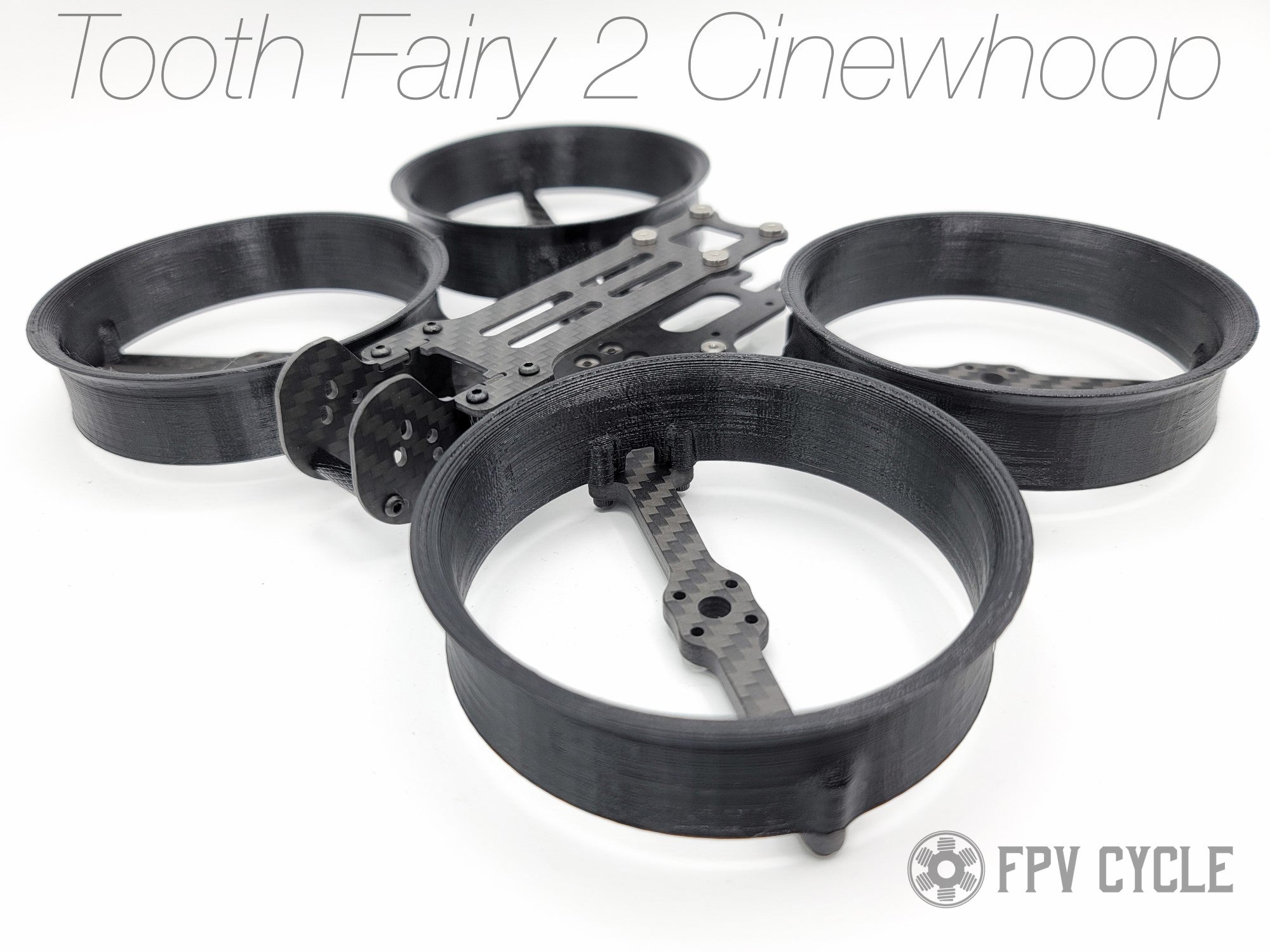
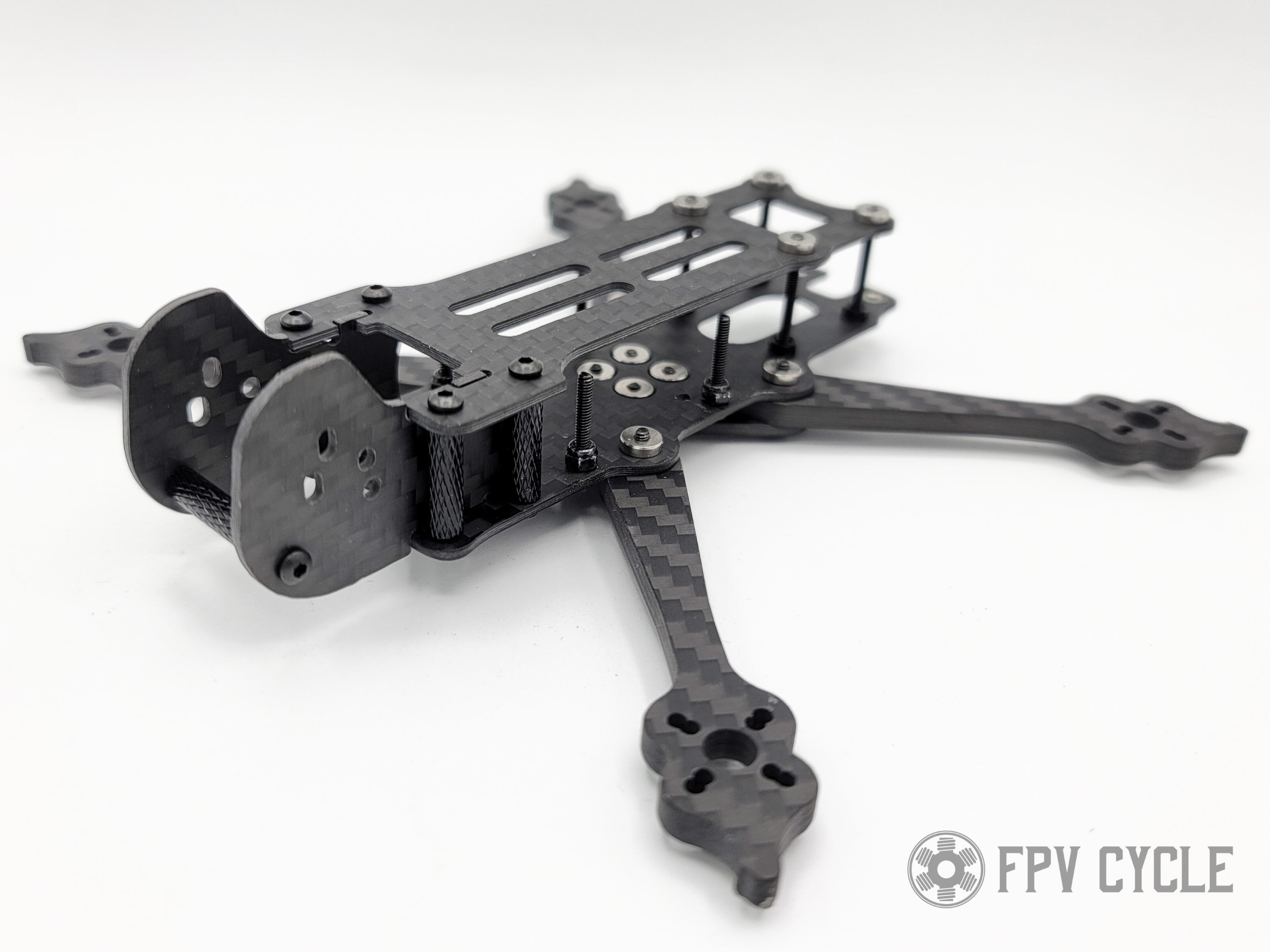
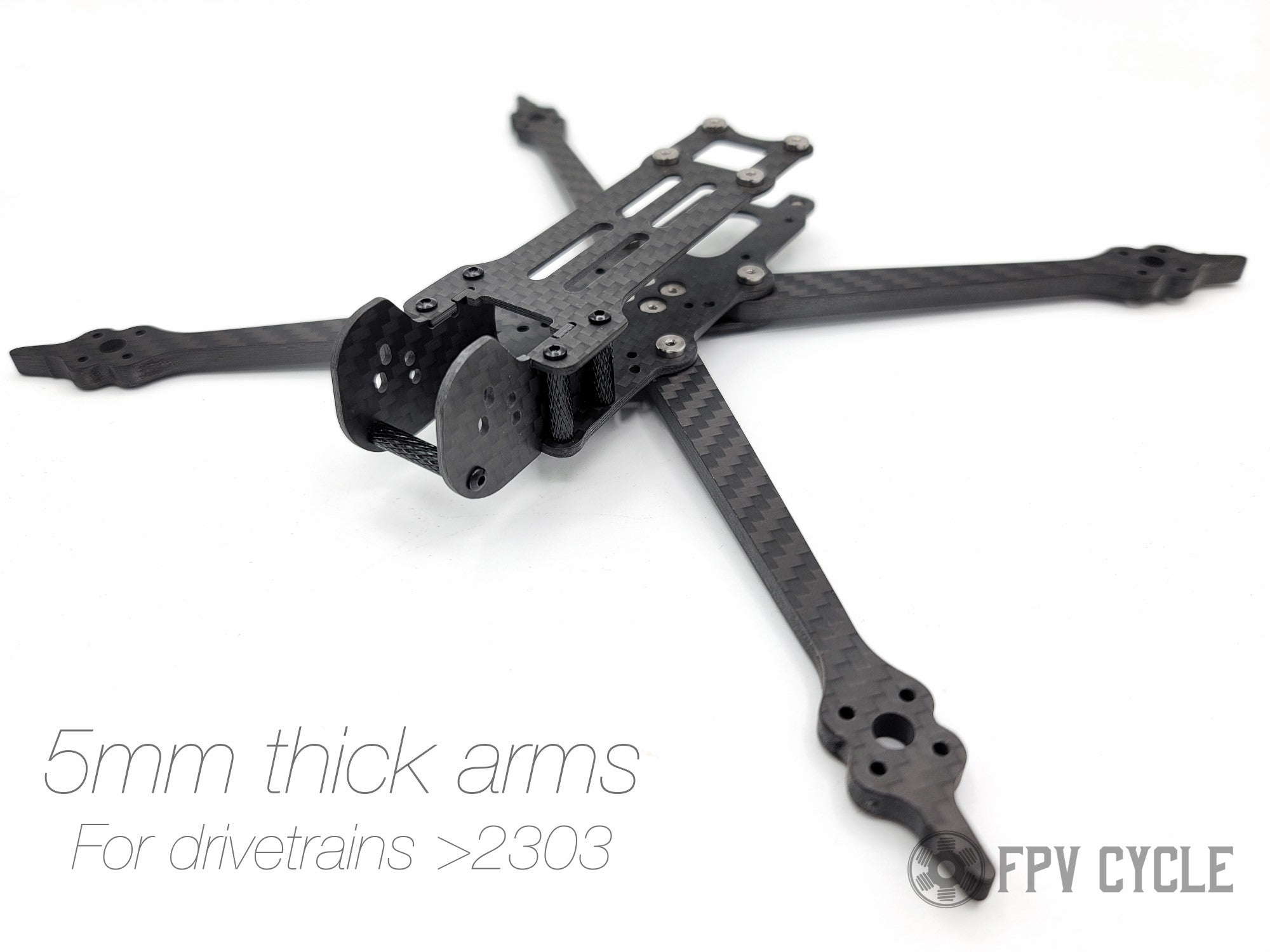
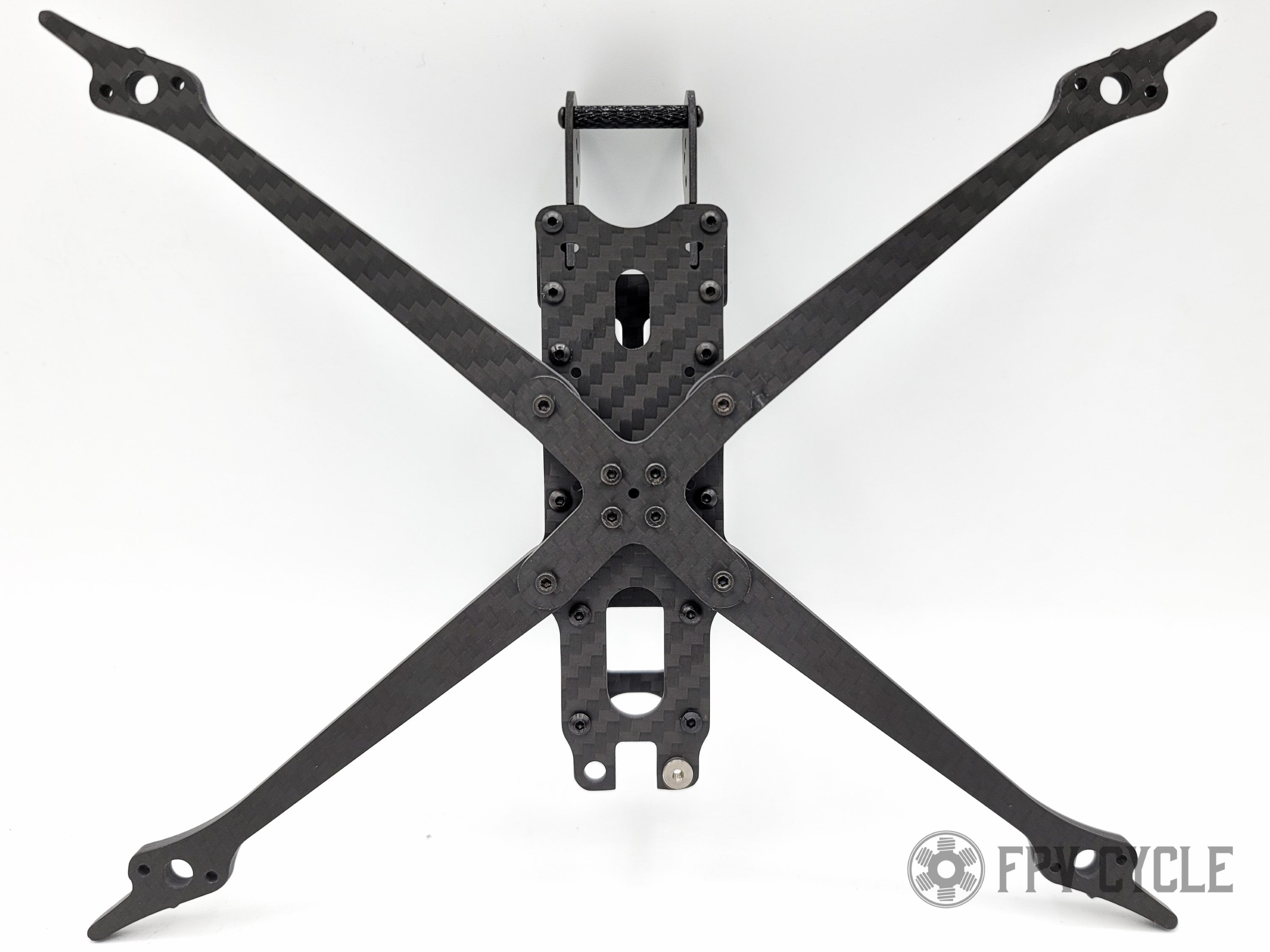
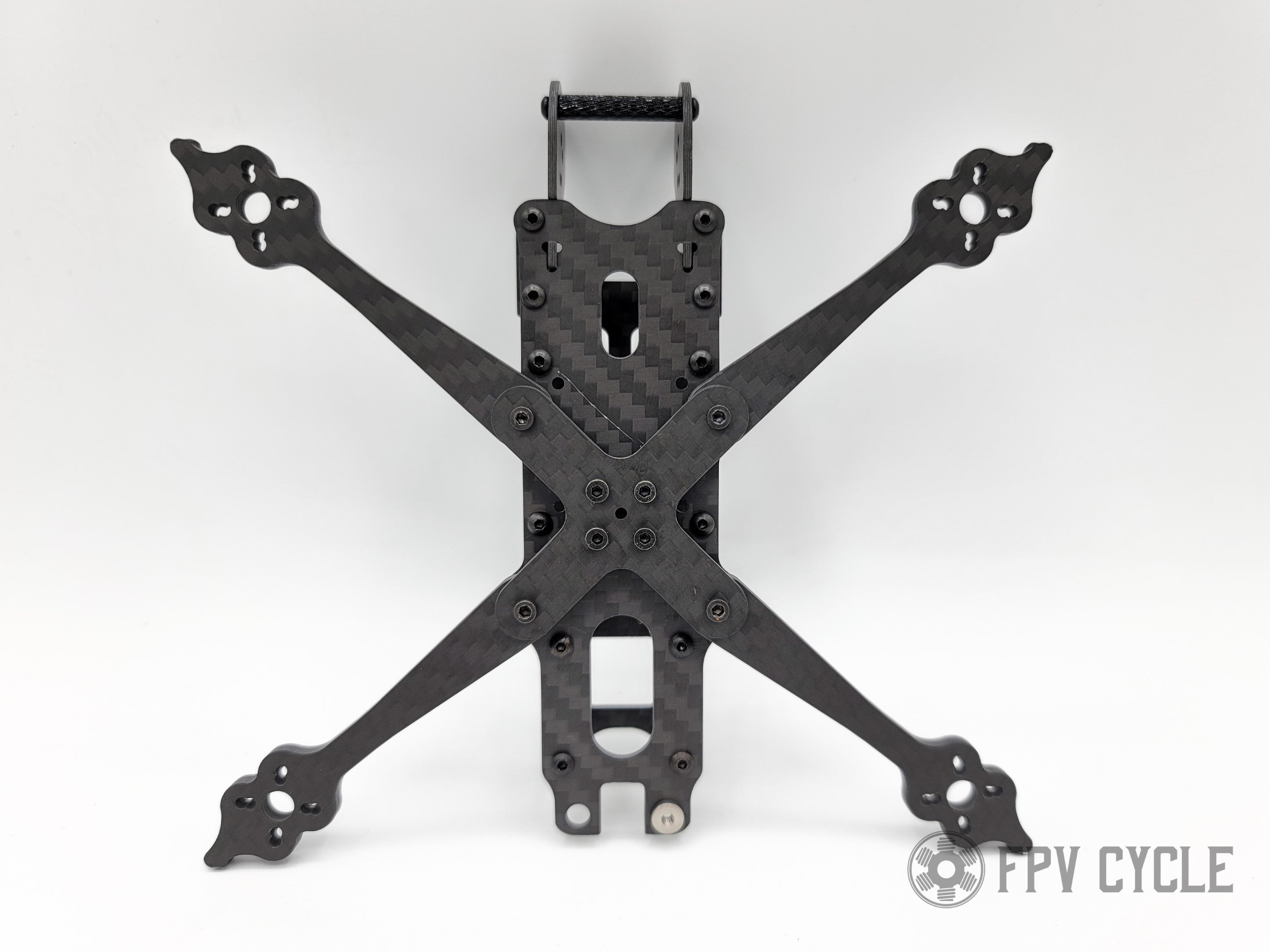
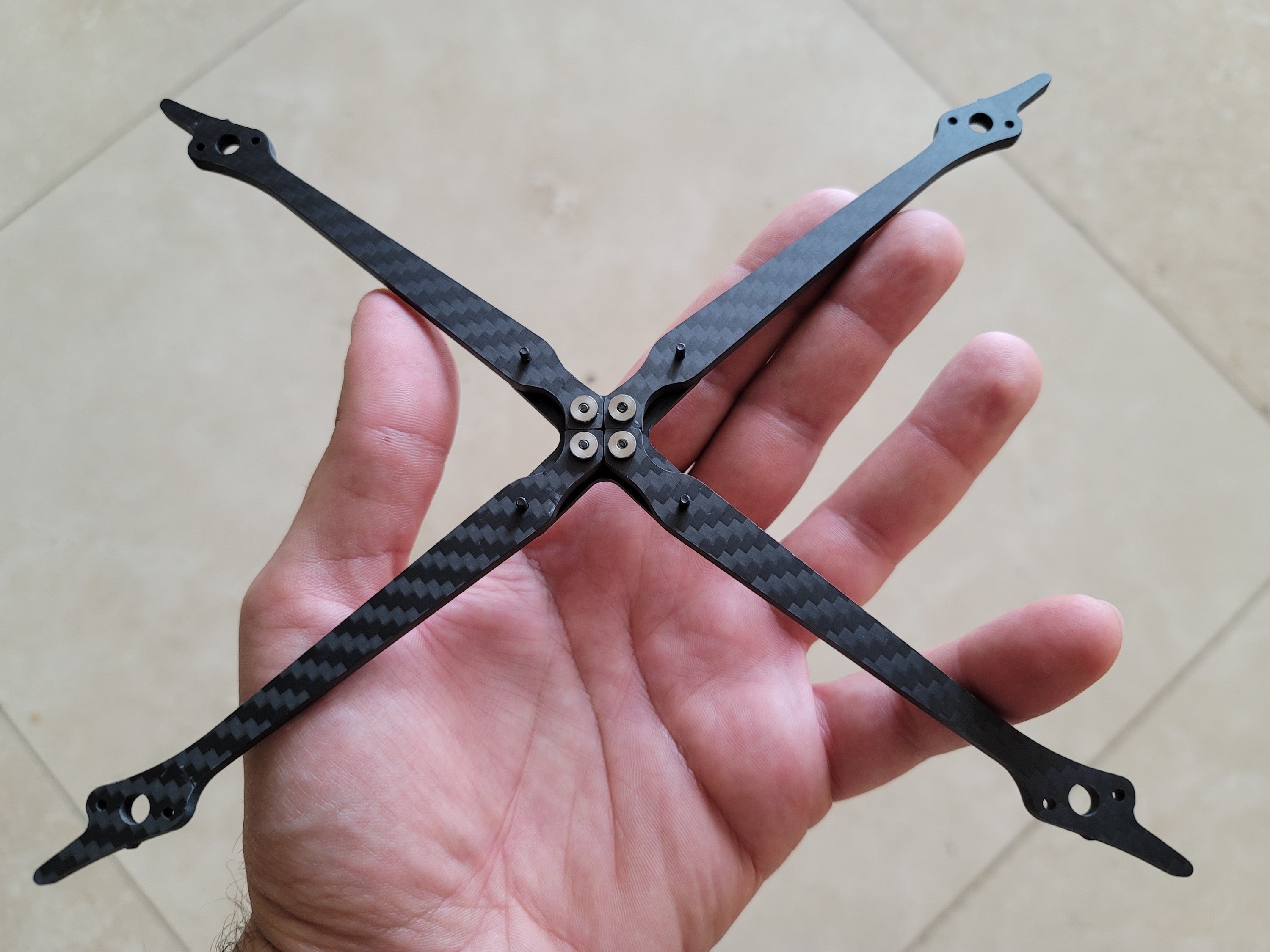
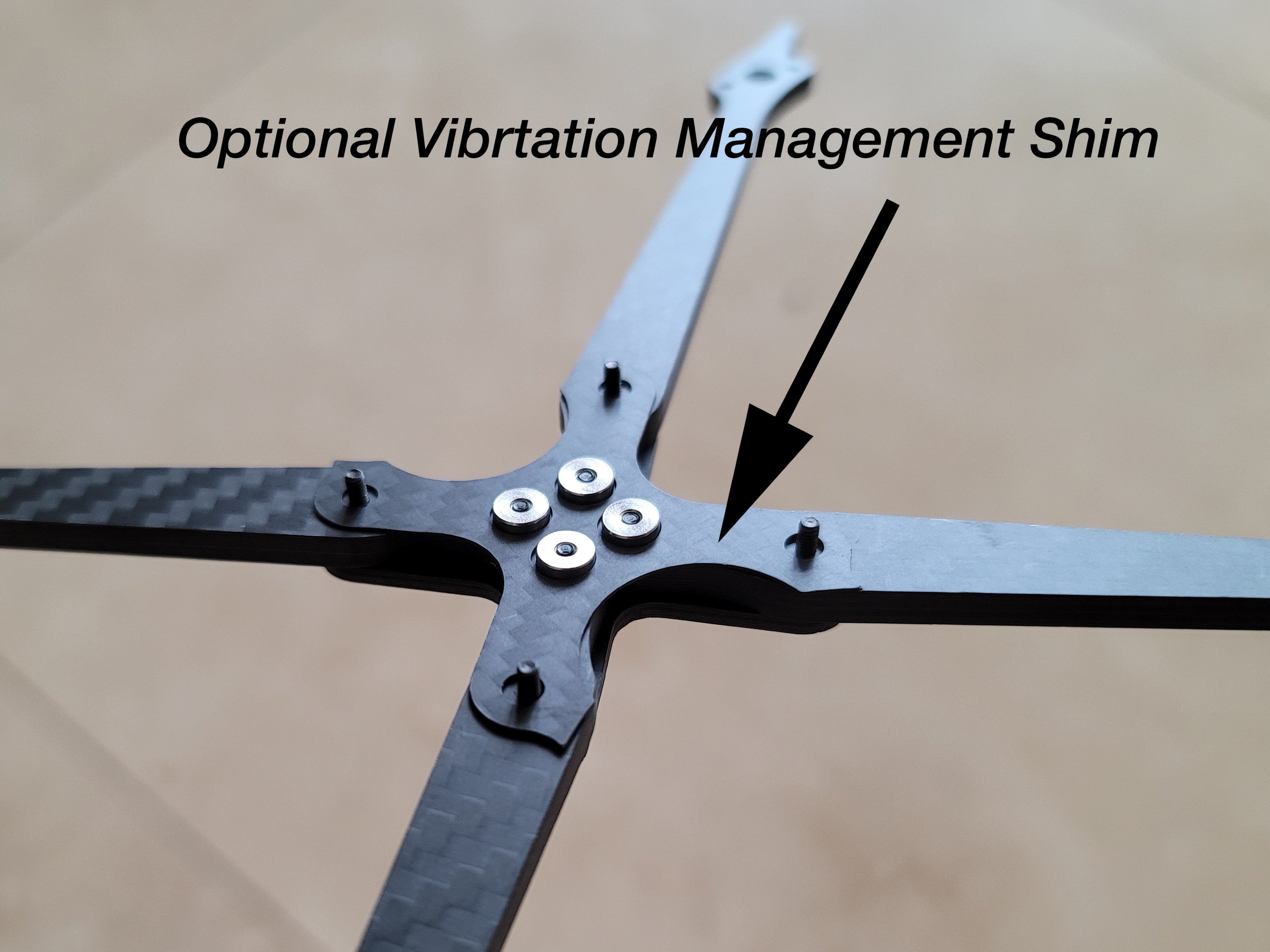
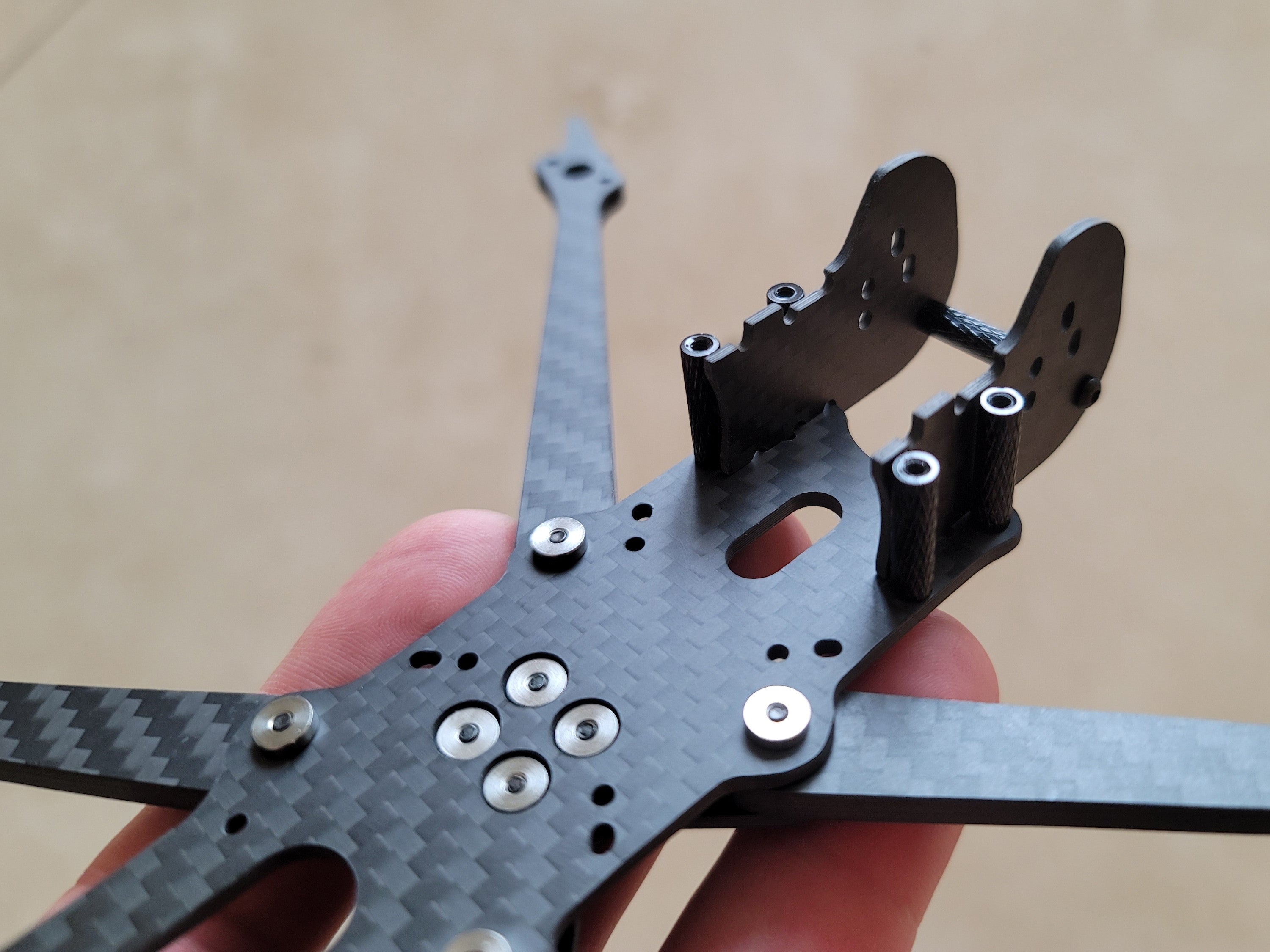

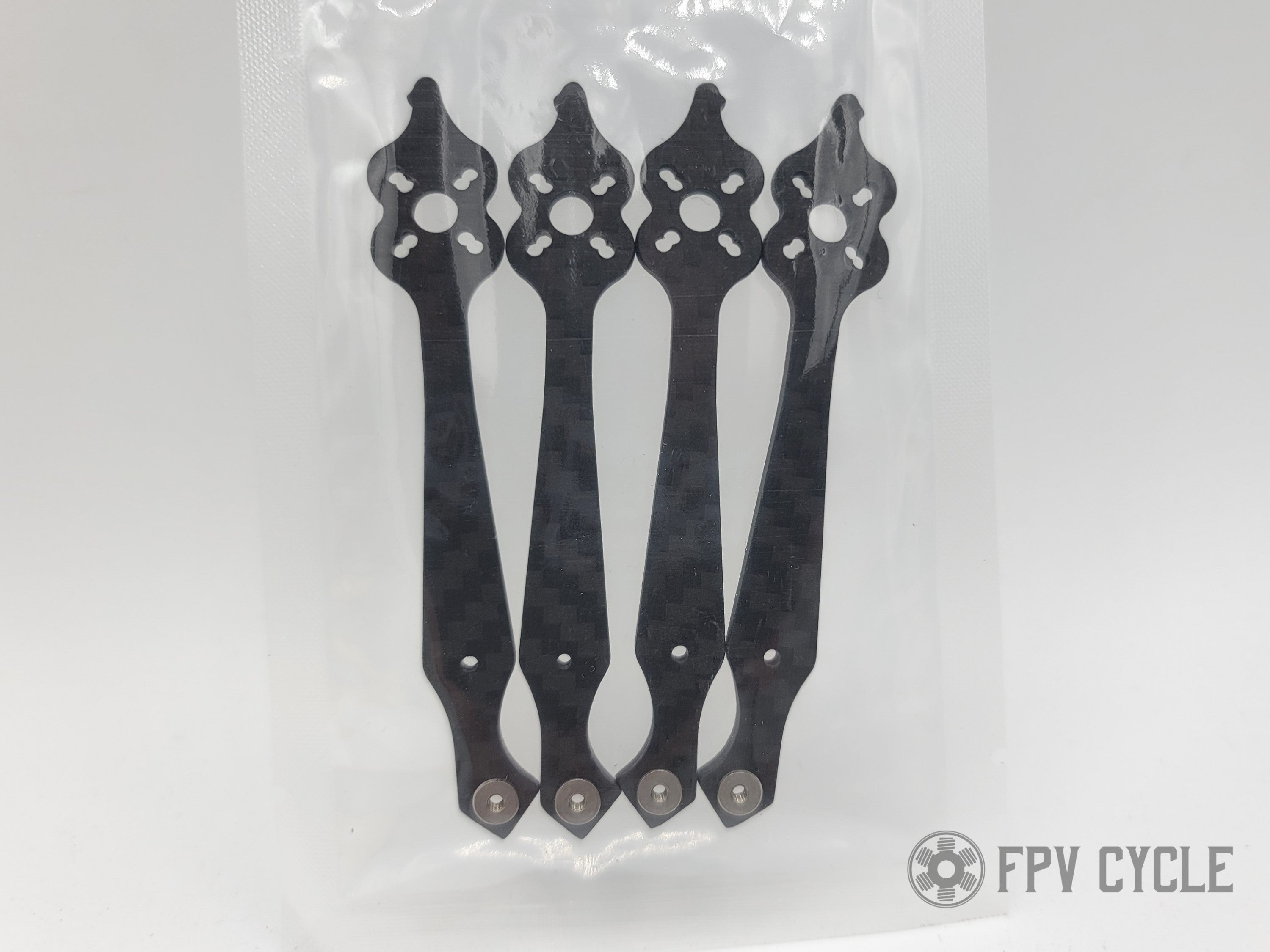


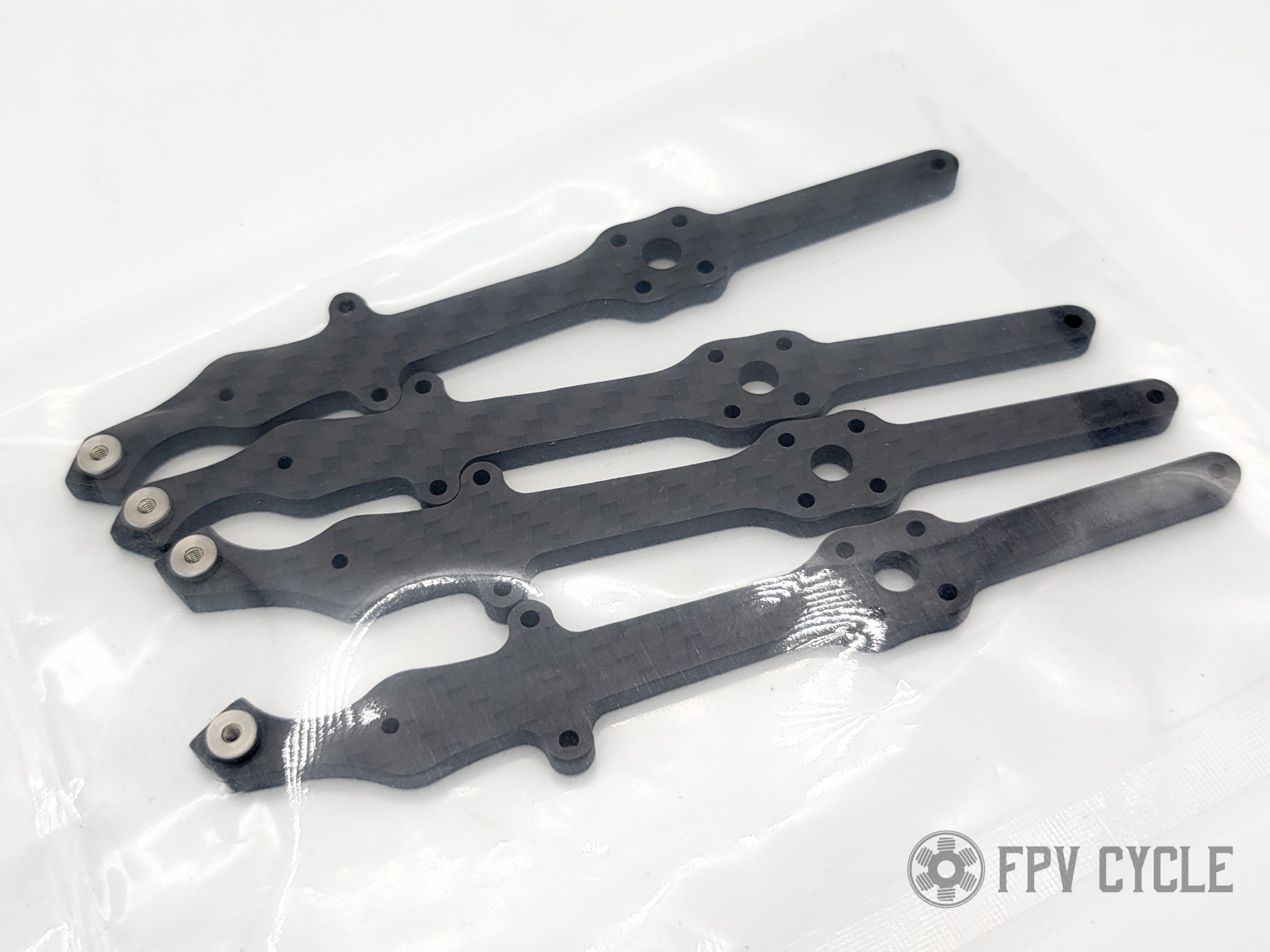
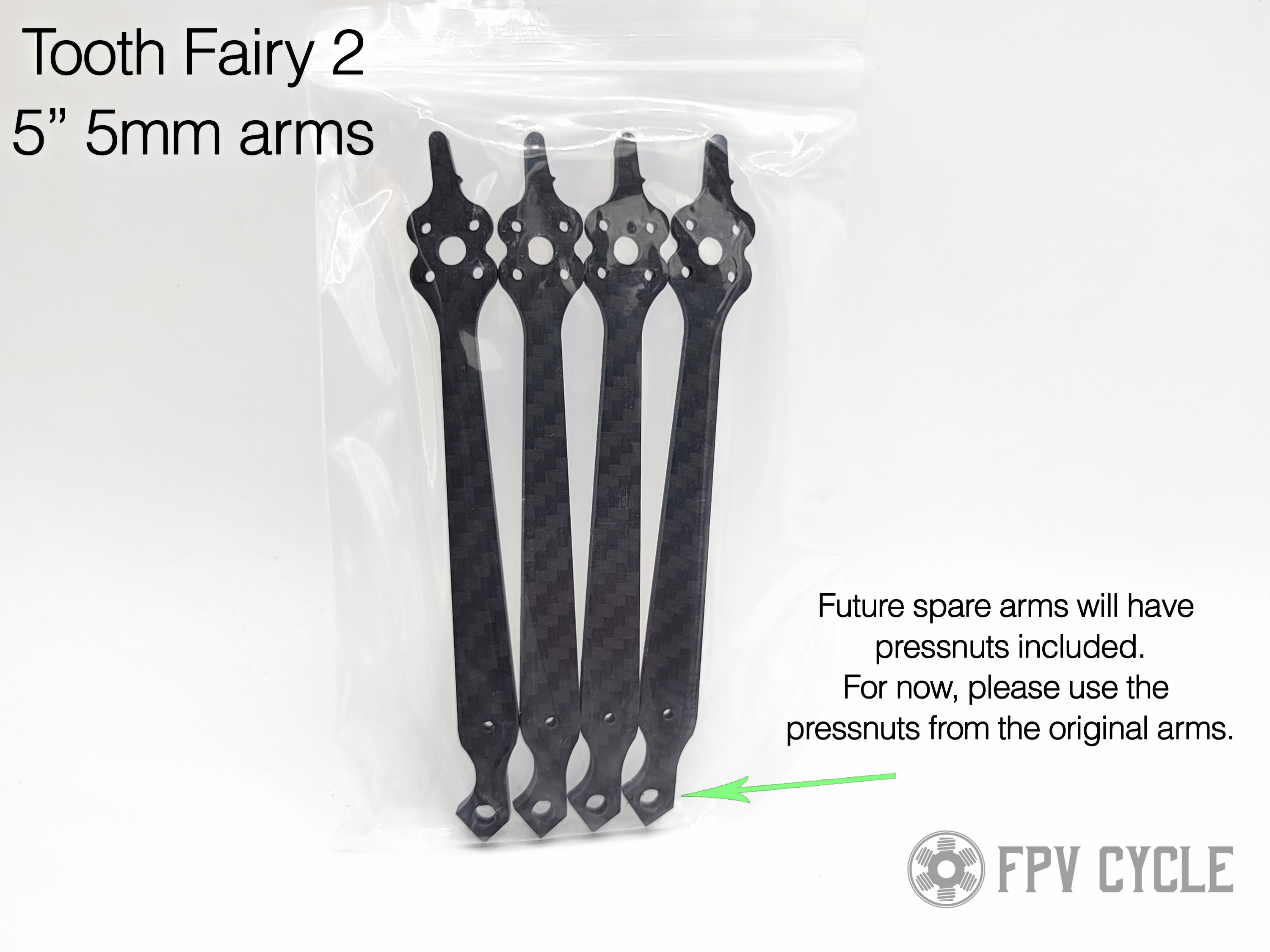
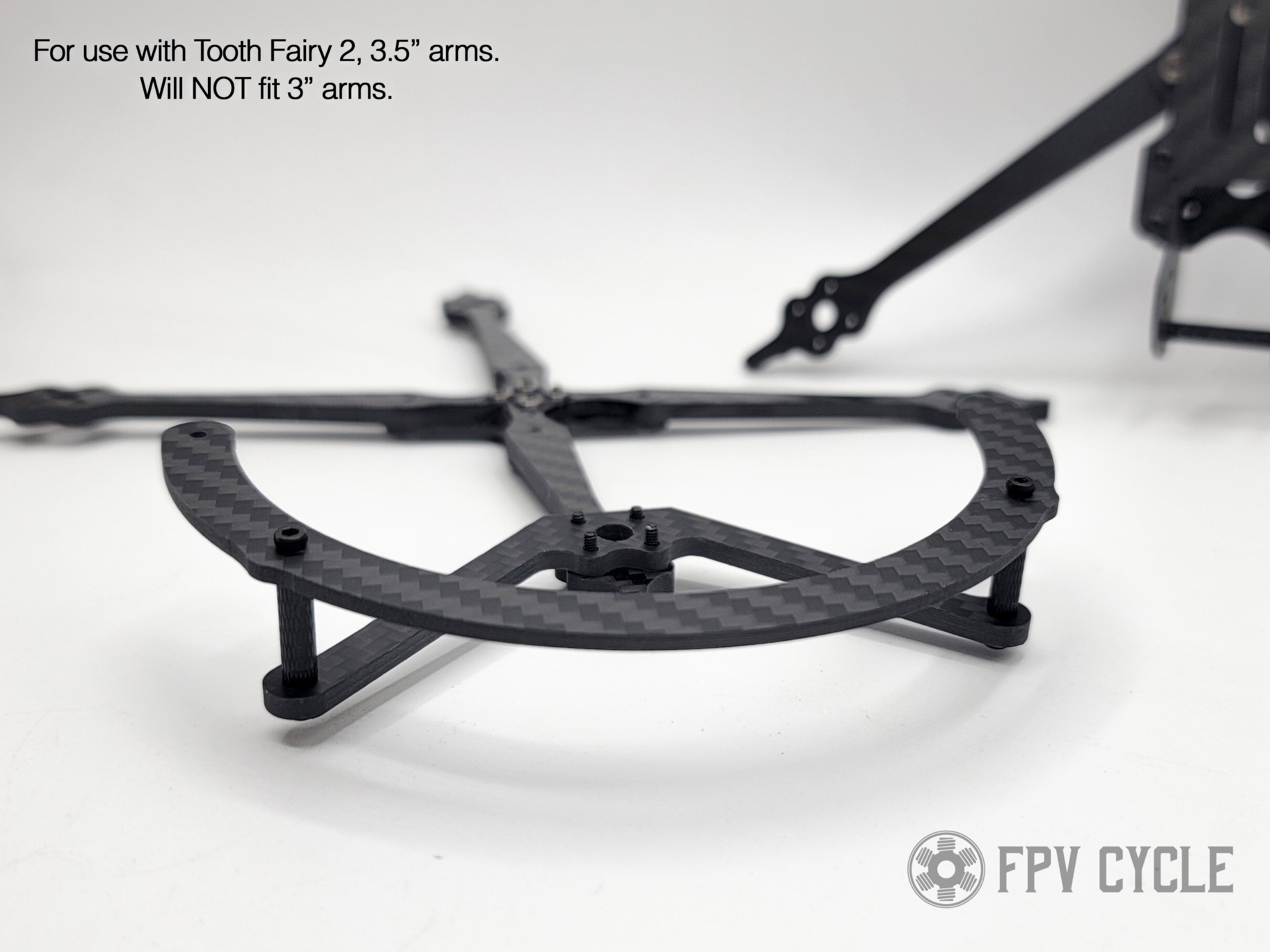

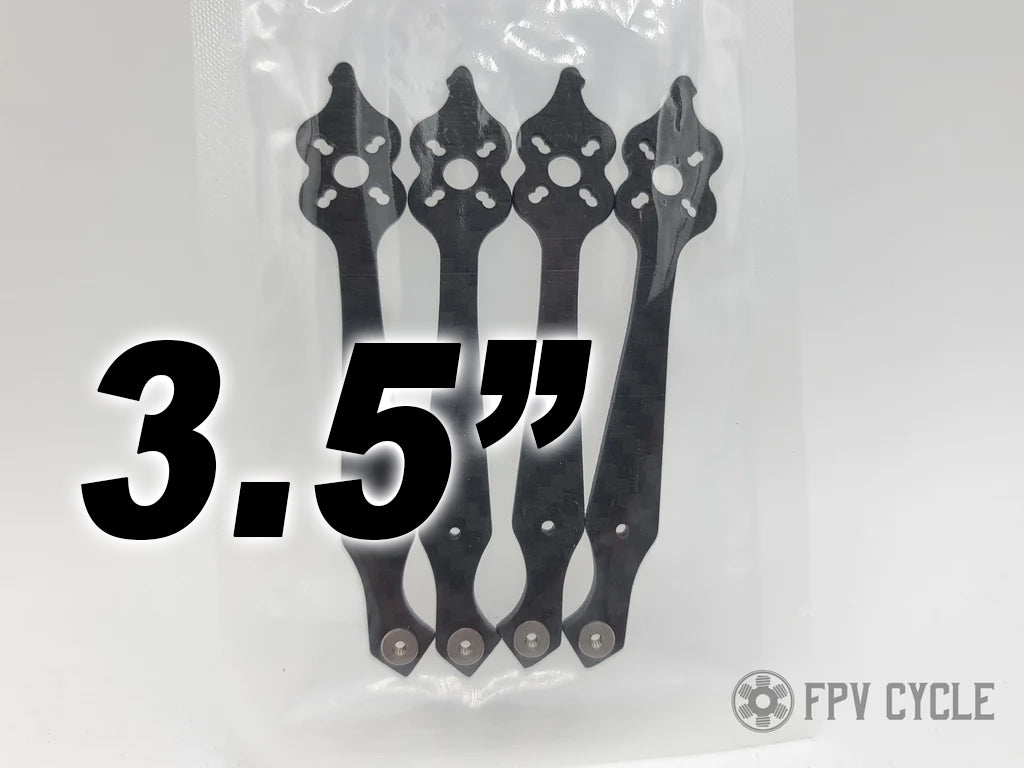
FPVCycle
FPVCycle ToothFairy 2 Frame
Choose options
This frame is cut from really nice carbon.
Low weight, excellent balance, easy to use, easy to service, respectable component protection, and DJI Vista ready. These were the goals of the Tooth Fairy 2. The low weight of this design will satisfy those 250g builds but it's really designed to handle ~325g AUW 5" to 5.21" build. Of course you can always run past that weight like we do so it's really up to you. We regularly carry GoPro's on our builds.
The most unique feature of this frame is that the Vista is integrated into the structure. The entire rear standoff is the Vista. Also, the 3" is designed with the option to use these prop guards if desired.
Light frames suffer from vibrational noise and resonance. These complications get worse as you increase the power of the quad. In order to improve reliability of these matters, this design has a unique vibration management arm mounting mechanism pointed out by Chris Rosser (YouTube: Chris Rosser). The mechanism introduces friction without the loss of rigidity. As a result, the 4mm arm version of this frame will be able to handle more powerful motors than it should. However because the frame does have somewhat long skinny arms, the 5mm version is STRONGLY recommended to use for any build that has motors larger than 2303 or otherwise 23mm short motors. The 5mm version should be selected for use with our 23mm tall motors.
Furthermore, there is an optional included carbon shim for ease of use with damping grease. This shim is intended to be used with Nyogel 767a, Nyogel pg-44A or some other vibration damping grease (or tape if you wish). The point is to put the grease between the shim and the main deck so you can swap arms easily without dealing with gooey grease all over the arms. The included arm screws should fit with the shim and grease but they could be 1mm longer. You may want to acquire 12mm M2 screws if you wish. Future batches will include slightly longer screws.
Gopro and antenna mounts CLICK HERE
Specifications of each version:
5" ToothFairy 2:
- Fits up to 5.25" props
- ~52g built (56g with electronic mounting hardware)
- Central 20x20 and Whoop mount pattern (~25.5x25.5)
- Motor mounting: 12x12 M2 with two screw holes
- Rear 20x20 mount pattern for Vista or other items
- Nylon spacers included for 20x20 VTX board or otherwise
- 15mm build height
- All steel hardware
- Integrated Vista into frame design
- Top mounted battery
- 20mm cam mounting width
- 4mm arms, 2mm body, 1.5mm top and cam plates
5" ToothFairy 2 with 5mm arms:
- 4 arms included with kit
- Fits up to 5.25" props
- ~61g built (65g with electronic mounting hardware)
- Central 20x20 and Whoop mount pattern (~25.5x25.5)
- Motor mounting: 12x12 M2 with four screw holes
- Rear 20x20 mount pattern for Vista or other items
- Nylon spacers included for 20x20 VTX board or otherwise
- 15mm build height
- All steel hardware
- Integrated Vista into frame design
- Top mounted battery
- 20mm cam mounting width
- 5mm arms, 2mm body, 1.5mm top and cam plates
- To use carbon shim, you will need four M2x12mm screws. Sorry for the oversight.
ToothFairy 2 - 3" Cinewhoop:
- 4 arms included with kit
- Use the following duct or print your own
- ~109g built (113g with electronic mounting hardware)
- Central 20x20 and Whoop mount pattern (~25.5x25.5)
- Motor mounting: 12x12 M2 with four screw holes
- Rear 20x20 mount pattern for Vista or other items
- Nylon spacers included for 20x20 VTX board or otherwise
- 15mm build height
- All steel hardware
- Integrated Vista into frame design
- Top mounted battery
- 20mm cam mounting width
- 4mm arms, 2mm body, 1.5mm top and cam plates
3" ToothFairy 2:
- 4 arms included with kit
- Optional prop guards and 2" props
- ~42g built (46g with electronic mounting hardware)
- Central 20x20 and Whoop mount pattern (~25.5x25.5)
- Motor mounting: 9x9 M2 and 12x12 M2
- Rear 20x20 mount pattern for Vista or other items
- Nylon spacers included for 20x20 VTX board or otherwise
- 15mm build height
- All steel hardware
- Integrated Vista into frame design
- Top mounted battery
- 20mm cam mounting width
- 4mm arms, 1.5mm body, 1.5mm top and cam plates
3.5" ToothFairy 2 arms + Guard option:
- 3.5" arms for the Tooth Fairy 2 - set of 4
- Light guards are an option for an open prop Cinewhoop alternative.
- The 23mm short motor or comparable is recommended for 3.5" props.
- In time, we will have a 3.5" kit as well but not until June or July
- HQ 8 blade 89mm prop + guards is as silent as I've ever heard a Cinewhoop
Recommended Parts for 5":
- 2004 - 2306 motor size
- Gemfan F3 prop
- ~90-130g battery
- AIO Whoop board
- 2004 motors if available- must be kept as light as possible
Recommended Parts for 3":
- 1404 minimum, 160X motor size recommended
- Moderately aggressive prop
- AIO Whoop board
- ~60-100g battery
About vibration management options for any build:
Damping grease between frame joints and under motors has been shown to make a significant improvement in quad resonance management. The difference can be as significant as going from completely un-flyable mess to beautifully flyable. More commonly it's just a minor improvement and only if you're at least somewhat versed in tuning filters. To those that don't burden themselves with tuning, there may not be any benefit other than consistency of performance across several builds. Other damping options such as electrical tape, TPU or some other solid material are only sometimes helpful and only on some quad builds (YMMV). Damping grease will improve ALL quads resonance profile without exception. The difference is that grease is a liquid and tape or some other material is a solid. Solids have elasticity while liquids do not. In fact if electrical tape helps, it's the sticky liquid glue attached to the solid electrical tape that is doing the work. The solid component of the tape is making it worse because it has elasticity. Regardless, if you're looking for performance improvements, vibration management and reducing filters are the easiest way to go. At this point it is recommended to use some sort of damping grease on every build because of how significant the benefits can be. That being said, we will also be the first to point out that vibration management is not at all required the vast majority of the time because of the software management in all flight code today.


